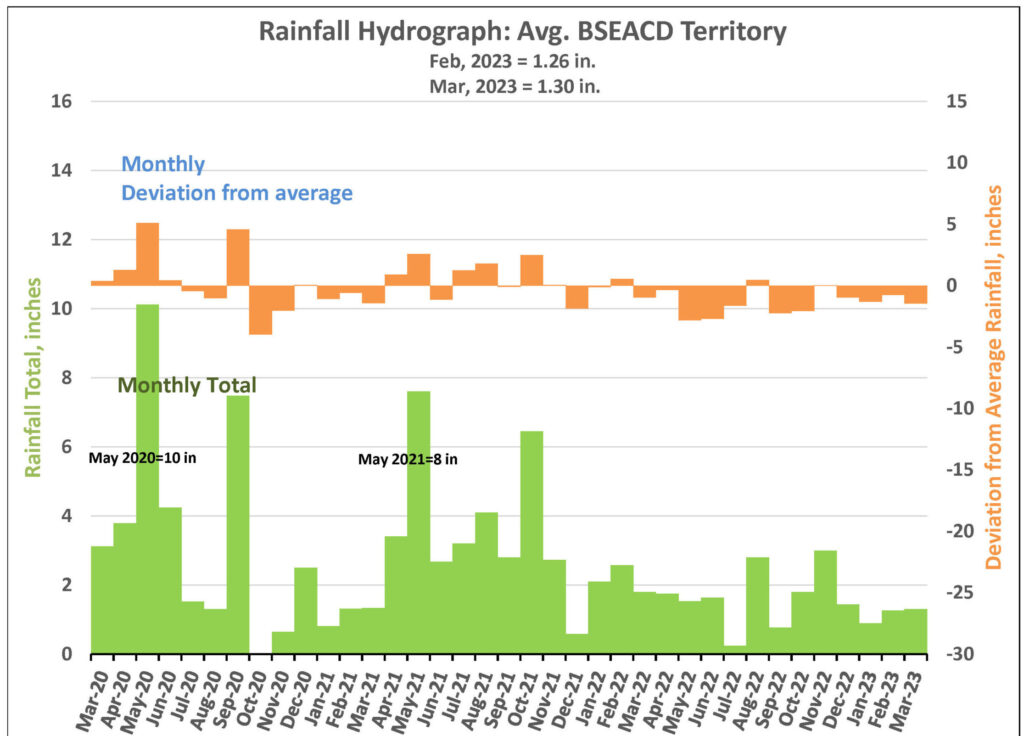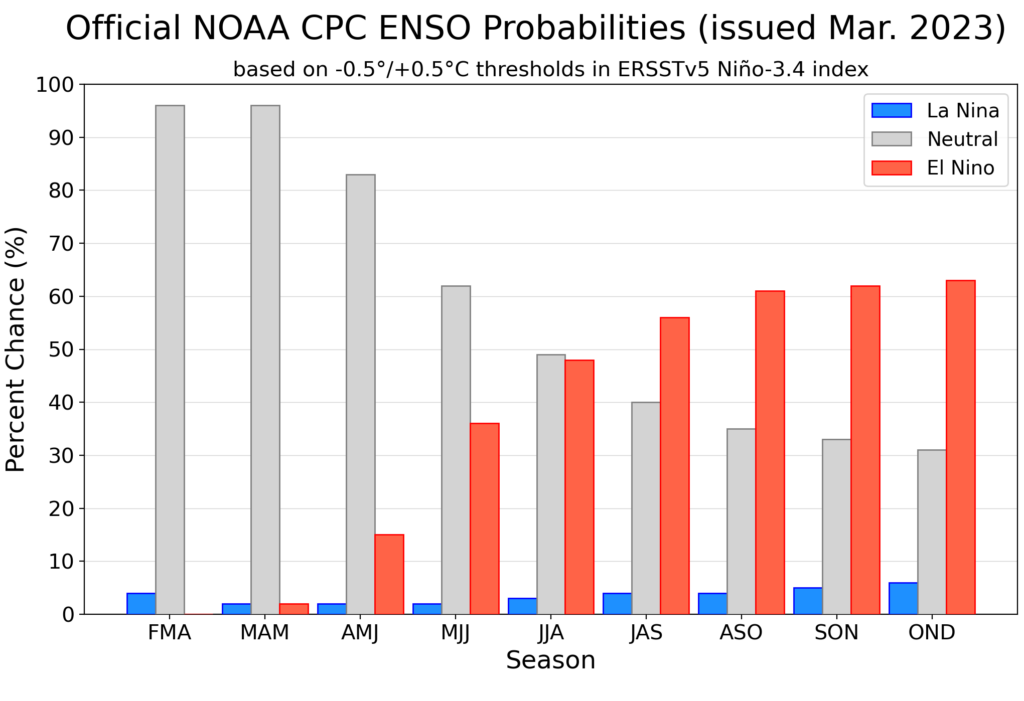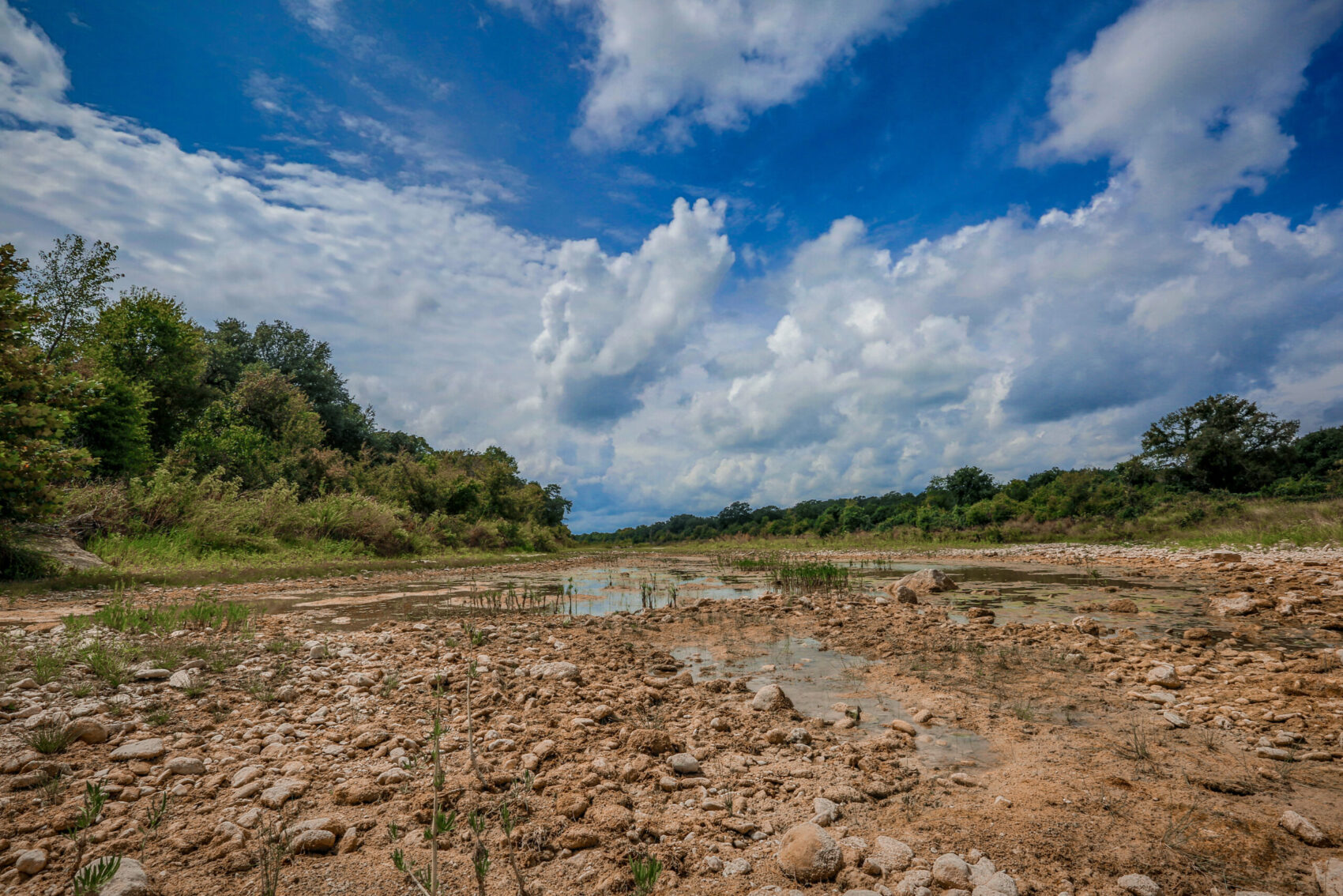We currently remain in Critical Drought status (Stage III). It was officially declared on October 20, 2022. One of the District’s drought triggers, Lovelady Monitor Well, passed below its Critical Drought (Stage III) trigger on October 17, 2022.
February rainfall delivered an average of 1.3 inches across the District, about 0.7 inches shy of its historical average of 2 inches (figure 1). March rainfall also delivered an average of 1.3 inches which helped brighten our beautiful wildflowers but yielded little aquifer recharge and leaves us 1.5 inches short of the March historical average (2.8 inches).

On March 30, the Lovelady monitor well had a level of 459.9 ft-msl, 2.8 ft below the trigger level for Critical Drought (Stage III) and about 2.8 ft above Stage IV Exceptional Drought (figure 2). Lovelady crossed under the Stage II trigger on May 26 and under Stage III on October 17.

Also on March 30, Barton Springs was flowing at 25 cfs (10-day average), 13 cfs below the Stage II Alarm drought trigger point of 38 cfs (figure 3). The Stage III Critical trigger is 20 cfs. Barton Springs crossed under the Stage II drought trigger in late June and could cross into Stage III in mid to late spring if we receive no additional rain.

Trinity water levels also continue to slowly decline (figure 4).

Is the rain outlook improving?
The Austin/Hill Country area has received below- annual- average rainfall in 2022 in part due to ongoing La Niña conditions (declared by NOAA on 10/14/21). However, the National Oceanic and Atmospheric Administration (NOAA) climate forecasters declared on March 9, 2023 that La Niña conditions have left the building and the Pacific Ocean-atmospheric system has transitioned to neutral conditions (figure 5). They’re also forecasting a transition into El Niño which could mean returning to average rainfall conditions in the typically-wettest time of the year (March-June), which would help when we need it most to bolster against the usual Texas summer dryness. This would be a critical step in staving off an unprecedented descent into Stage 4 Exceptional Drought, which has been an expected consequence of slowing spring flow and water level declines.

We’ve been in a long pattern of below-average rainfall and streamflow, which has elevated our need to focus on water conservation. With some potential relief on the horizon, we should continue our efforts to protect and conserve water and contribute to a stronger recovery from this long period of Central Texas drought.
Other useful links:
- Drought Media Toolkit
- Press Release Archive
- Drought Status Page
- Drought Management Page
- Drought Information/Resources
BSEACD is a groundwater conservation district charged by the Texas Legislature to preserve, conserve, and protect the aquifers and groundwater resources within its jurisdiction, which includes parts of three central Texas counties. It is governed by a Board of five elected directors and staffed with hydrogeologists, groundwater regulatory compliance specialists, environmental educators, geospatial systems specialists, and administrative support personnel.

